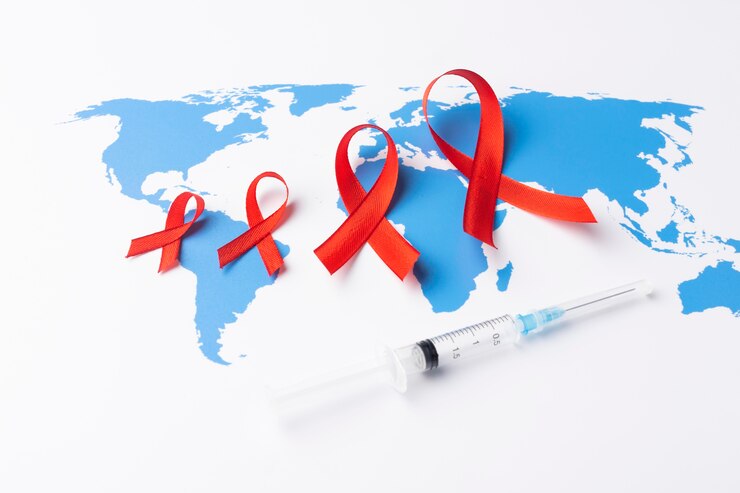Namibia, a country characterized by vast deserts, rugged landscapes, and a diverse population, faces unique health challenges that have shaped its national policies and international reputation. Key among these challenges are issues related to life expectancy and the HIV epidemic, both of which have had profound effects on the nation’s development over the past few decades. As Namibia continues to evolve and modernize, its health sector is working towards improving the quality of life for its citizens and addressing these critical health challenges.
This article provides a comprehensive look into Namibia’s life expectancy and HIV statistics, exploring the factors contributing to the nation’s health status, the impact of the HIV/AIDS epidemic, and the efforts being made to improve public health outcomes.
Life Expectancy in Namibia: An Overview
Life expectancy is a crucial indicator of a country’s overall health, reflecting the quality of healthcare, living conditions, and public health initiatives. Over the past few decades, Namibia’s life expectancy has seen notable fluctuations, influenced largely by the HIV/AIDS crisis, along with other factors such as nutrition, healthcare access, and disease prevention.
As of 2023, the life expectancy in Namibia is approximately 64 years for women and 58 years for men. This marks an improvement from previous decades, but the country is still working towards raising its life expectancy to levels comparable to global averages.
The Impact of HIV/AIDS on Life Expectancy
Namibia has one of the highest HIV prevalence rates in the world. At the height of the epidemic, Namibia experienced a dramatic drop in life expectancy due to the widespread effects of HIV and AIDS. By the early 2000s, the country’s life expectancy had plummeted from the 60s to just under 50 years. The HIV/AIDS epidemic had devastating consequences on the Namibian population, leading to higher mortality rates, particularly among young adults.
However, significant progress has been made in the fight against HIV/AIDS, which has led to gradual improvements in life expectancy. Key factors in this improvement include:
- Access to antiretroviral therapy (ART): Namibia has made substantial strides in increasing access to ART, which has allowed individuals living with HIV to live longer, healthier lives. ART reduces the viral load in HIV-positive individuals, helping to prevent the progression to AIDS and lowering the risk of transmitting the virus to others.
- Prevention programs: The Namibian government, along with international organizations such as UNAIDS and the World Health Organization (WHO), has implemented a range of prevention programs aimed at reducing HIV transmission. These include education campaigns, condom distribution, HIV testing and counseling, and the prevention of mother-to-child transmission (PMTCT) of HIV.
- Community engagement: Grassroots organizations and communities have played a critical role in raising awareness about HIV prevention and reducing stigma. Community-based initiatives have helped to increase HIV testing rates, promote safer sexual practices, and support those living with the virus.
Despite these efforts, challenges remain. HIV prevalence among adults (aged 15-49) stands at approximately 13.3%, making it one of the most pressing public health issues in Namibia. The stigma surrounding HIV/AIDS continues to be a barrier to prevention, testing, and treatment. Furthermore, the ongoing economic and social challenges faced by the country often hinder access to healthcare for vulnerable populations, such as those living in rural areas.
Key Statistics: The HIV Epidemic in Namibia
To fully understand the scope of Namibia’s HIV epidemic, it is important to look at some key statistics:
- HIV Prevalence Rate: As of the most recent estimates, the adult HIV prevalence rate in Namibia is about 13.3%, which remains one of the highest in the world. Women are particularly affected, with a significantly higher prevalence rate compared to men, particularly among young women.
- New HIV Infections: Namibia continues to report thousands of new HIV infections annually, despite extensive prevention efforts. In 2020, there were an estimated 4,000 new infections, with the majority occurring in the age group of 15 to 49 years. Young women are especially vulnerable, due to a combination of biological factors, gender inequality, and risky sexual behaviors.
- HIV-Related Deaths: In the early 2000s, the HIV/AIDS epidemic caused thousands of deaths annually, with many young adults succumbing to the disease. However, due to the expansion of antiretroviral treatment programs, the number of HIV-related deaths has significantly decreased in recent years. According to the latest data, Namibia records about 2,000 deaths annually from HIV/AIDS.
- Antiretroviral Therapy Coverage: As of 2021, more than 90% of people living with HIV in Namibia who are eligible for antiretroviral therapy (ART) are receiving it. This remarkable achievement has played a pivotal role in improving the quality of life for those living with HIV and reducing mortality rates. However, continued efforts are needed to ensure that all individuals have equal access to ART, especially those in remote and underserved areas.
- Prevention of Mother-to-Child Transmission (PMTCT): Namibia has made significant progress in preventing the transmission of HIV from mothers to their newborns. The introduction of antiretroviral drugs during pregnancy and childbirth has dramatically reduced the rate of mother-to-child transmission, which is now below 2% in most regions.
Factors Contributing to the HIV Epidemic in Namibia
The persistence of high HIV rates in Namibia can be attributed to several interrelated factors:
- Gender Inequality: Women, particularly young women, face heightened vulnerability to HIV due to gender-based violence, unequal power dynamics in sexual relationships, and limited access to education and healthcare. Studies show that young women in Namibia are more likely to have older sexual partners, who may have higher HIV infection rates, leading to greater exposure to the virus.
- Stigma and Discrimination: The stigma surrounding HIV and AIDS continues to discourage many individuals from seeking HIV testing, treatment, or care. Fear of discrimination often leads people to hide their HIV status, which increases the likelihood of transmitting the virus to others.
- Limited Access to Healthcare: While Namibia has made strides in expanding healthcare access, rural areas still face significant challenges in terms of healthcare infrastructure, availability of medical personnel, and access to HIV services. Geographical isolation, poverty, and lack of transportation hinder the ability of some individuals to access HIV testing, treatment, and counseling.
- Cultural and Behavioral Factors: Traditional attitudes towards sex, as well as high rates of multiple sexual partners and unprotected sex, contribute to the spread of HIV in Namibia. Addressing these behaviors requires comprehensive sexual education and efforts to promote healthier sexual practices.
Life Expectancy: A Resilient Path to Recovery
Despite the severe impact of HIV/AIDS on Namibia’s population, the country has made remarkable progress in improving life expectancy in recent years. As mentioned, life expectancy in Namibia currently stands at 64 years for women and 58 years for men, marking an increase from the lows experienced during the peak of the HIV epidemic.
Several factors have contributed to this recovery in life expectancy:
- Improved healthcare systems: Namibia’s healthcare infrastructure has gradually improved, with increased access to primary healthcare services, specialized medical care, and preventive measures.
- Public health initiatives: The government, along with international partners, has implemented a range of public health programs aimed at improving maternal health, child nutrition, and disease prevention, all of which have contributed to the nation’s overall health improvement.
- HIV treatment and care programs: The expansion of ART coverage has not only reduced HIV-related deaths but has also helped to boost life expectancy for those living with HIV. Ongoing efforts to expand ART coverage and improve treatment adherence will continue to play a vital role in improving the longevity of the Namibian population.
Namibia’s health challenges, particularly with respect to HIV and life expectancy, are deeply interwoven with its historical, social, and economic context. While the country has made remarkable strides in combating the HIV epidemic and improving life expectancy, significant work remains to be done to address the root causes of the epidemic, including gender inequality, stigma, and limited healthcare access.
Through continued investment in public health infrastructure, education, and HIV prevention and treatment programs, Namibia is steadily progressing toward improving the health and well-being of its citizens. The nation’s experience with HIV/AIDS and its ongoing efforts to improve healthcare offer valuable lessons in global health and underscore the importance of comprehensive, community-based interventions in combating health crises.













